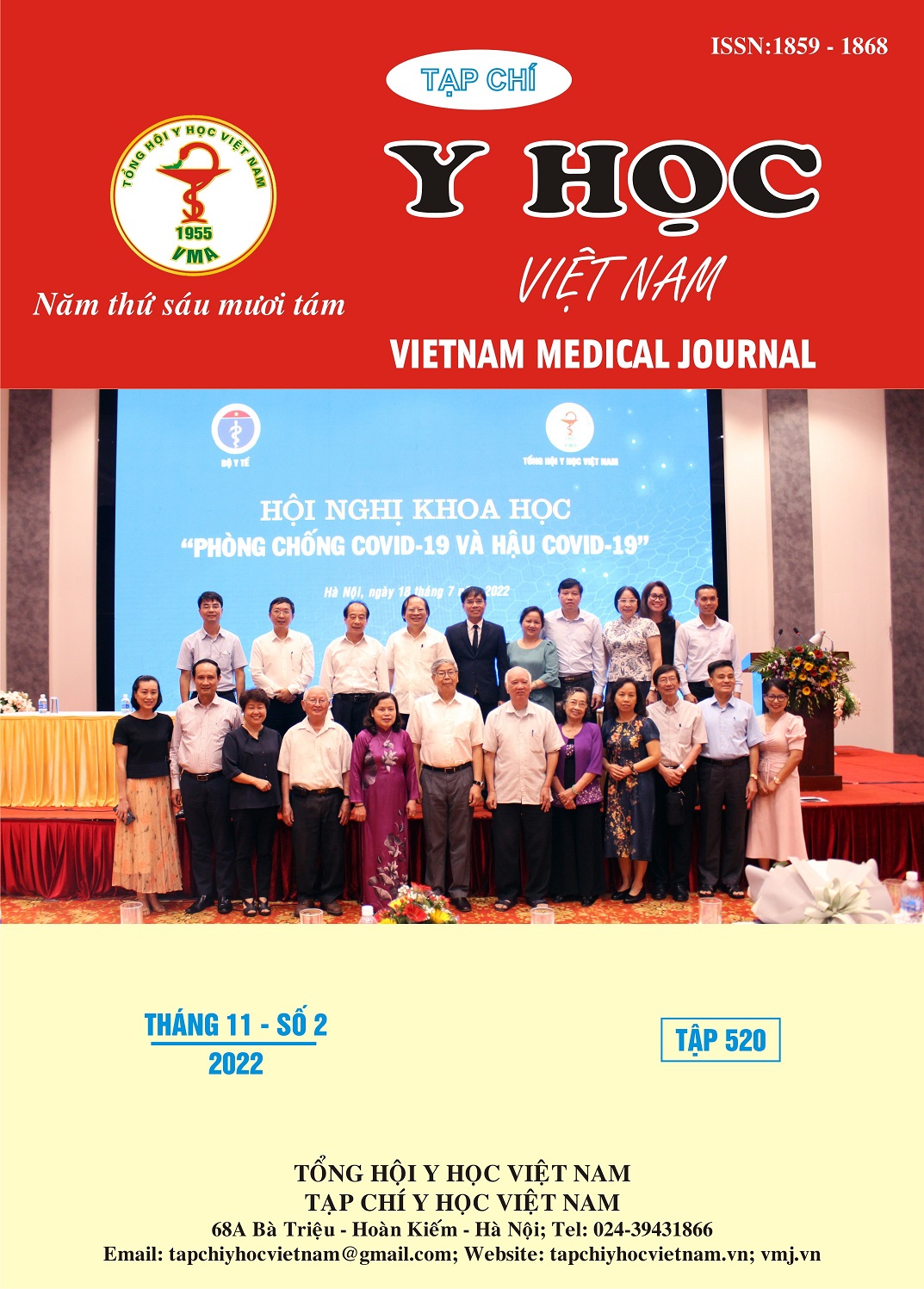IDENTIFICATION OF MUTATION IN THE KCND3 AND HCN4 GENES CONTROLLING K+ CHANNELS IN PATIENTS WITH BRUGADA SYNDROME
Main Article Content
Abstract
First described in 1992, Brugada syndrome (BrS) has a high prevalence in Asia, especially in Southeast Asia (5–14/1,000), including Vietnam. It is responsible for 4 to 12% of sudden cardiac death in men under 40 years of age. Caused primarily by mutations in genes encoding voltage-channel proteins, more than 300 pathogenic variants in 19 different genes have been reported to date. In which, KCND3 and HCN4 genes play a very important role in disease expression through controlling the K+ channel, which is the direct cause of cardiac repolarization. The objective was to identify genetic mutations on 2 genes KCND3 and HCN4. Subjects and methods: 30 patients diagnosed with Brugada syndrome at the Vietnam Heart Institute were sequenced by Sanger method. Results: the study identified 3/30 patients with mutations, the KCND3 gene accounted for 6.7% (2/30), the HCN4 gene accounted for 3.3% (1/30), 100% of the mutations were replacements nucleotides and has never been published before.
Article Details
Keywords
BrS, HCN4, KCND3
References
2. Blangy H, Sadoul N, Coutelour JM, et al. [Prevalence of Brugada syndrome among 35,309 inhabitants of Lorraine screened at a preventive medicine centre]. Arch Mal Coeur Vaiss. 2005; 98(3):175-180.
3. Ito H, Yano K, Chen R, He Q, Curb JD. The prevalence and prognosis of a Brugada-type electrocardiogram in a population of middle-aged Japanese-American men with follow-up of three decades. Am J Med Sci. 2006;331(1):25-29. doi:10.1097/00000441-200601000-00008
4. Matsuo K, Akahoshi M, Nakashima E, et al. The prevalence, incidence and prognostic value of the Brugada-type electrocardiogram: a population-based study of four decades. J Am Coll Cardiol. 2001;38(3):765-770. doi:10.1016/s0735-1097(01)01421-8
5. Coppola G, Corrado E, Curnis A, et al. Update on Brugada Syndrome 2019. Current Problems in Cardiology. 2021;46(3):100454. doi:10.1016/ j.cpcardiol.2019.100454
6. Giudicessi JR, Ye D, Kritzberger CJ, et al. Novel mutations in the KCND3-encoded Kv4.3 K+ channel associated with autopsy-negative sudden unexplained death. Hum Mutat. 2012;33(6):989-997. doi:10.1002/humu.22058
7. Biel S, Aquila M, Hertel B, et al. Mutation in S6 domain of HCN4 channel in patient with suspected Brugada syndrome modifies channel function. Pflugers Arch. 2016;468(10):1663-1671. doi:10.1007/s00424-016-1870-1
8. HomoloGene - NCBI. Accessed May 18, 2022. https://www.ncbi.nlm.nih.gov/homologene/?term=kcnd3
9. hcn4 - HomoloGene - NCBI. Accessed May 18, 2022. https://www.ncbi.nlm.nih.gov/ homologene/?term=hcn4


